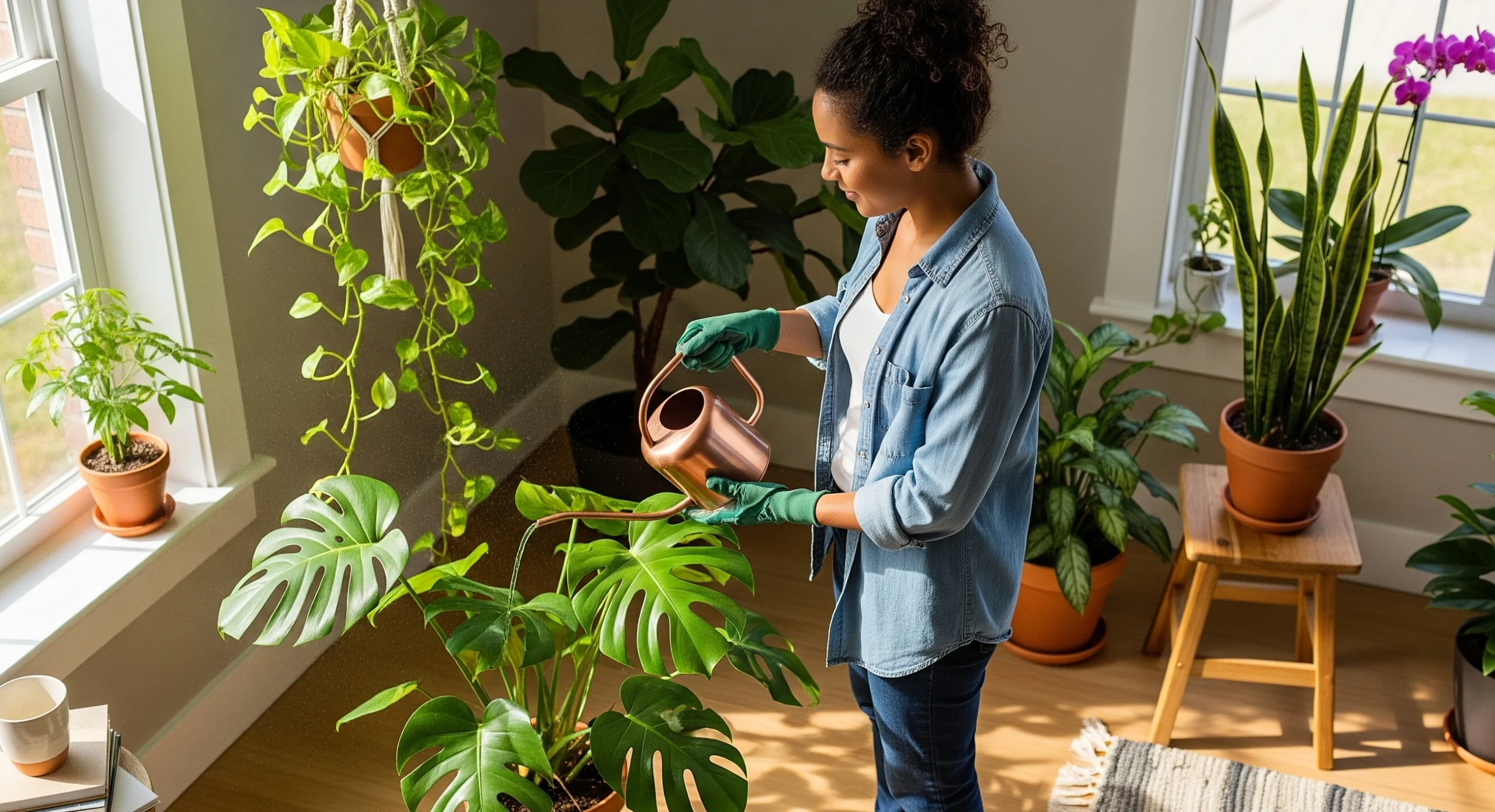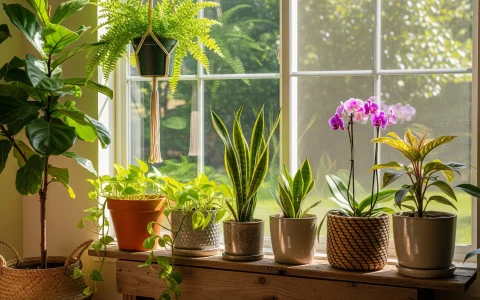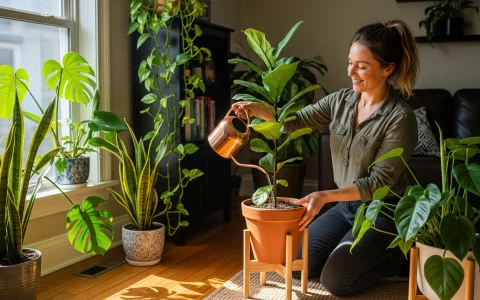How to Keep Houseplants Healthy: A Complete Guide for Beginners

🌿 Introduction
Growing plants at home is not just a hobby—it can also be a source of peace and happiness. In addition to beautifying your space, plants help filter the air and increase humidity. However, many people struggle to keep their houseplants healthy due to a lack of basic knowledge.
Do your plants often wilt, turn yellow, or even die despite regular watering? This article provides a complete guide on how to care for your houseplants so they stay healthy and thriving—even for beginners.
🪴 1. Why Keeping Plants Healthy Matters
- 🌬️ Purifies indoor air from toxins (examples: snake plant, pothos)
- 🧘♀️ Reduces stress and improves mood
- 🌸 Enhances room aesthetics
- 🐜 Prevents pests and plant diseases
Sick plants not only look unpleasant but can also become a breeding ground for mold or insects inside your home.
📝 2. Understanding the Basic Needs of Plants
2.1. Sunlight
- Not all plants require direct sunlight.
- Indoor plants like monstera and peace lily do well with indirect light.
- Signs of insufficient light: tall, leggy growth, small and pale leaves.
2.2. Water
- Watering frequency depends on plant type, pot size, and climate.
- Plants like cacti and succulents dislike overly damp soil.
2.3. Soil and Nutrients
- Use the right planting medium: a mix of husk, cocopeat, and compost.
- Add organic or liquid fertilizer once a month.
2.4. Temperature and Humidity
- Tropical plants prefer temperatures between 22–30°C (71–86°F).
- Use a humidifier if the room is too dry (especially with air conditioning).
🌱 3. Signs Your Plant is Unhealthy
| Symptom | Common Cause |
|---|---|
| Yellow leaves | Overwatering, nutrient deficiency |
| Curled leaves | Pests, too much sunlight |
| Rotten stem | Roots sitting in water |
| Leaf drop | Extreme room temperature |
| White spots on leaves | Fungal infection, powdery mildew |
📌 Always inspect your plants regularly—just like you would check on a pet!
🐞 4. Dealing with Pests and Plant Diseases
Common pests:
- Mealybugs: cotton-like appearance
- Fungus gnats: small mosquito-like insects
- Caterpillars and grasshoppers: chew on leaves
- Spider mites: cause tiny holes in leaves
Natural solutions:
- Spray a mix of water + dish soap + neem oil
- Use garlic and chili as natural pesticides
- Make a small fly trap with apple cider vinegar + liquid soap
❗ Avoid chemical sprays in enclosed spaces, especially if you have children or pets.
🧪 5. Plant Care Tips by Type
5.1. Foliage Plants
Examples: monstera, philodendron, calathea
- Avoid direct sunlight
- Wipe leaves with a damp cloth
- Mist in the morning
5.2. Flowering Plants
Examples: orchids, miniature roses, peace lily
- Use high-phosphorus fertilizer to promote blooms
- Protect from direct rain
5.3. Succulents and Cacti
Examples: aloe vera, echeveria, mini cactus
- Water only when soil is completely dry
- Need at least 3 hours of direct sunlight daily
🧼 6. Cleaning Plants and Pots
- Remove dust from leaves to improve photosynthesis
- Repot if roots outgrow drainage holes
- Sterilize gardening tools regularly
- Avoid stagnant water under pots
🧽 Use vinegar water to clean ceramic or plastic pots.
🔁 7. Daily and Monthly Plant Care Schedule
Daily:
- Check soil moisture (with your finger or a moisture meter)
- Ensure adequate lighting
- Light misting if air is dry
Weekly:
- Clean leaves & pots
- Check for pests
- Rotate plants for even growth
Monthly:
- Replace part of the topsoil
- Add organic fertilizer
- Wash pots if mossy
📆 Use a reminder app or create a simple plant care calendar.
💡 Special Tips for Beginners
- Start with easy plants like snake plant, pothos, or cactus.
- Use pots with drainage holes to avoid waterlogging.
- Avoid overwatering—more plants die from too much water than too little.
- Place plants near windows with natural light.
- Observe and document plant growth weekly.
📸 Taking weekly photos can help spot small changes.
🧠 FAQ – Frequently Asked Questions
Q: Why do my plants wilt quickly even though I water them daily?
A: You might be watering too often, causing root rot. Check the soil moisture.
Q: Can indoor plants receive direct sunlight?
A: Some can (like cacti and succulents), but most prefer indirect light.
Q: What is the best fertilizer for ornamental plants?
A: Use liquid organic fertilizer such as compost tea, or balanced NPK (10-10-10).
🏁 Conclusion
Keeping houseplants healthy is not difficult if you understand their basic needs. Sunlight, water, nutrients, and care are the perfect combination for plants to grow beautifully and thrive. Caring for plants also teaches us patience, attention to detail, and appreciation for life. 🌿



